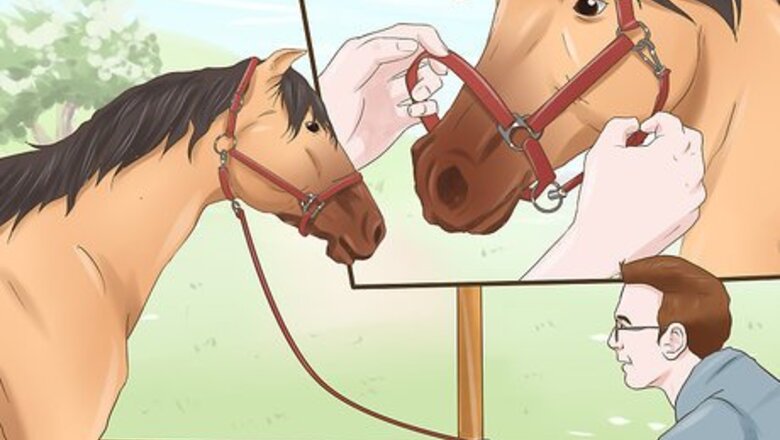
views
Encouraging the Horse to Cooperate
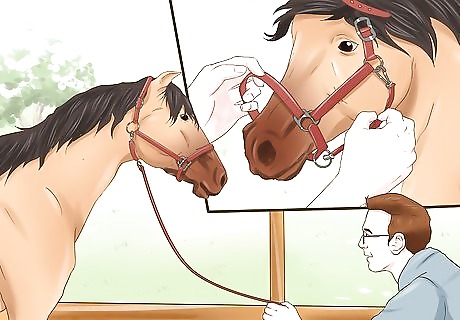
Halter and tie your horse. Your horse should be haltered and tied before attempting to put the bridle on. Keep them tied fairly short on the lead. If the lead is too loose, they may have room to avoid you. However, you don't want to tie the horse so that it can't move at all. For many horses, this will increase their hatred of the bridling process. You want the lead just loose enough that they can't lift their head out of your reach.
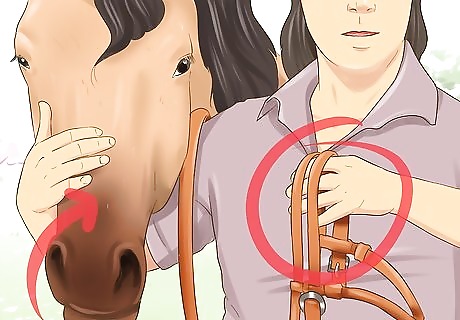
Reach over the horse’s head. If your horse keeps throwing its head, you can keep it still by resting your hand on its head. Hold the bridle in your left hand, and reach over the horse's head with your right so that your hand is sticking between its ears. If the horse tries to move its head, gently press down on the top of their mane to encourage them to bend their head towards you.
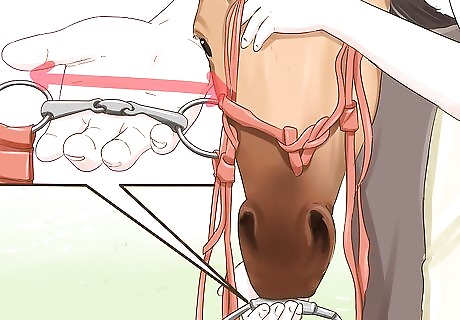
Pull the bridle up. Hand the top of the bridle to your right hand, and take the bit in your left hand, resting it against your flat fingers. Use your right hand only to hold the bridle's weight. Gently press the bit against their lips.
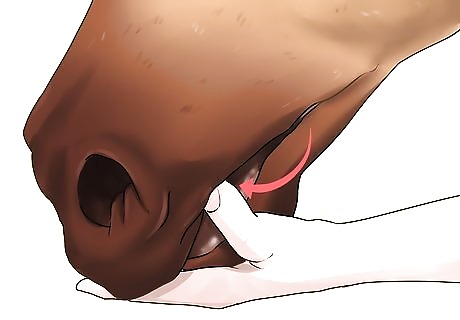
Rub their gums. If the horse doesn't take the bit, then you can encourage them to open their mouth. Keep the bit resting against your flat fingers on your left hand, and slip your thumb into the upper corner of their mouth. Rub the gums until they open their mouth. Gently slip the bit in their mouth. Keep gentle pressure against the teeth, but be sure not to knock the bit against their teeth. This is painful to the horse, and it will make it more difficult for you to bridle them. You may want to practice putting your thumb in without the bit first. Make sure that you are reaching in the side of the mouth where there are no teeth. This will prevent biting and injury.
Soothing Your Horse
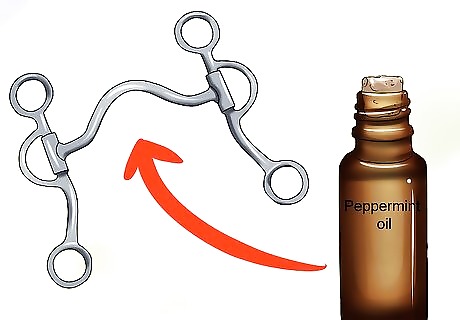
Rub your bit in peppermint oil. Horses generally love the taste of peppermint. You can put some peppermint oil on the bit to encourage them to take it. The oil will last for a long time, so you may not have to reapply it for a few months.
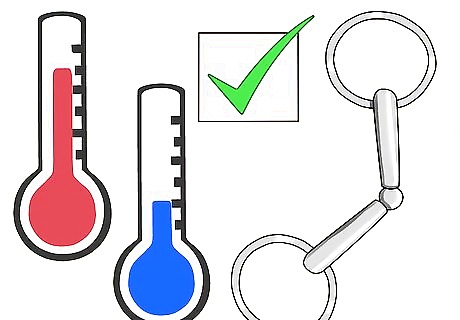
Make sure the bit is the right temperature. Bits that are too hot or cold can be painful or uncomfortable for your horse. You should store your bridle by hanging it up away from direct sunlight and inclement weather, such as rain or snow. If it's summer, keep the bit from sitting in the direct sun, where it can overheat and burn your horse. If it's winter, warm the bit up by rubbing it between your hands before asking the horse to take it.
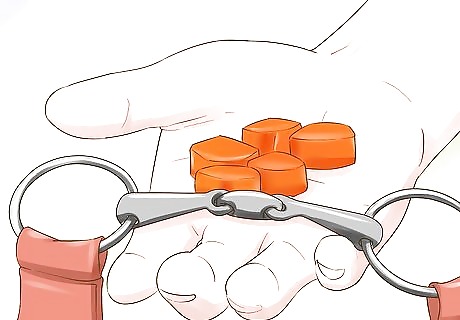
Give your horse a treat. Hold a treat on the bit and let your horse see it. While he slips the treat into his mouth, quickly but gently slip the bit into his mouth and buckle the bridle. Fruit and vegetable treats should be cut up before being offered to your horse while more syrupy treats can be smeared over the bit. Some treats that horses enjoy include: Store-bought horse treats Peppermint candy Molasses Apples Unsweetened apple sauce Carrots Sugar cubes Honey
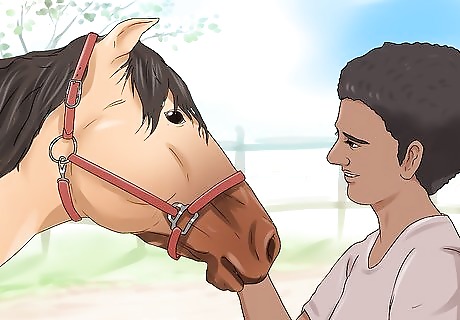
Speak to your horse in a calming tone. While bridling your horse, speak to them in a soothing, gentle tone. If you do this often enough, your horse will come to associate your voice with a safe and serene environment. If your horse has a bad day or a cranky attitude, you can use this voice to return them to a calm state. What you say isn’t as important as how you say it. You might say to horse, “It’s all right. I’m just putting the bridle on.” You might even narrate what you are doing, such as “I’m just going to reach over. Here, now take the bit.” You can even just use soothing sounds as, “shh…shh…”
Finding the Root of the Problem
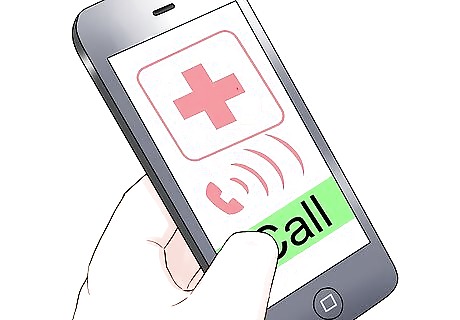
Call a veterinarian. Certain medical problems can make even the most gentle horse upset and difficult to manage. Many horses avoid the bit because their teeth and mouth hurt. Often, fixing their issues solves the problem overnight. If your horse throws their head when you touch their ears, you may want to have them checked for ear mites. Keep an eye out for tooth or mouth abscesses. If your horse has never had their teeth "floated"(filed smooth), it may be the problem.
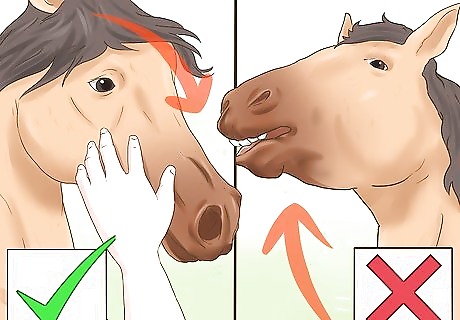
Study their body language. A horse communicates through certain elements of body language. By learning how to interpret their body language, you might be able to figure what it is that is bothering your horse. It may take a few weeks to understand your horse’s unique body language, but in general, horses tend to demonstrate the same physical cues. If the ears are pointed backwards, it may mean that they are distracted by other sounds. This could also mean that your horse is stressed or agitated. If the ears are excessively twitching or swiveling, they may be either anxious or distracted. Your horse's head should be lowered if they are relaxed. If the horse holds their head high but still, they may be distracted by something. If their head is low but they are shaking it from side to side, they are demonstrating aggression. A horse that is leaning back and splaying its forelegs may be scared or spooked. They may also look tense, flare their nostrils, and have really wide eyes. If your horse paws the ground, they may be bored. If they forcefully stomp, they may be becoming annoyed.
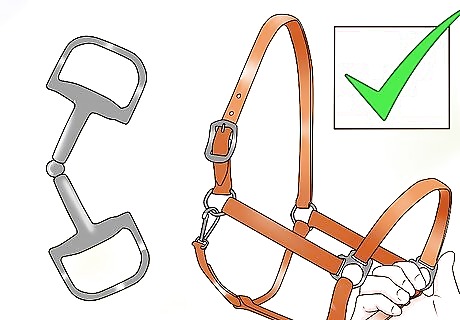
Check your equipment. Ill-fitting or worn equipment can be uncomfortable for your horse, and it may explain why your horse is so reluctant to be bridled. In addition to the bridle, you should check your saddle to make sure that there are no protruding parts that might make your horse grumpy. You can use a "bit-sizer" from your local tack shop to figure out what size bit is best for your horse. Check the bit to make sure that there are no cracks or sharp edges. These might hurt your horse. If your horse does not like to have their ears touched, you can use a bridle with bit clips. This will make it easier for you to put the bridle over their head without touching their ears.
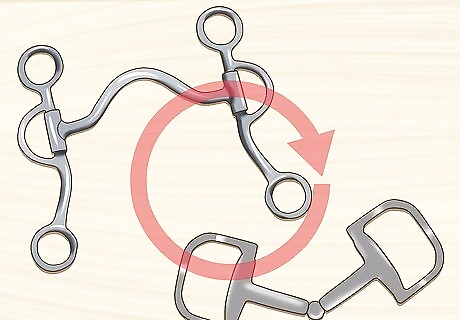
Switch your bits. Some horses don’t like particular types of bits. They may dislike the taste or be uncomfortable with the size. If your horse is reluctant to take the bit, you might want to consider switching to different material or thickness. Test out different bits to see which one is best for your horse. Some horses prefer the taste of copper bits over that of stainless steel or nickel. Some horses may do well with plastic bit. Some horses may be entertained by a bit with spinning parts. Bits that are too small may be pinching the horse's mouth while bits that are too big may hang out of their mouth. Rubber bits with large diameters may work well with younger, more inexperienced horses. A loose ring, 3-piece snaffle is another good type of bit to start out with.




















Comments
0 comment